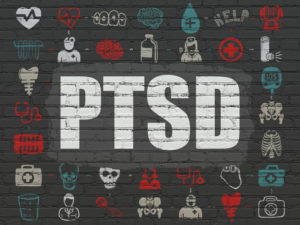 A soldier coming home from a war zone. A paramedic who responds to a serious car accident. A physician who watches a child die, unable to save him.
A soldier coming home from a war zone. A paramedic who responds to a serious car accident. A physician who watches a child die, unable to save him.
Those three scenarios may seem different, but they all have one thing in common: the person may suffer from post-traumatic stress disorder (PTSD) because of what they have seen and experienced.
Up until very recently, the mental health of our veterans and first responders was rarely talked about. But now it is in the news frequently, and for good reason. Paying attention to and treating the mental health of first responders will help keep them on the job, and having well-trained people stay in these demanding jobs should be a top priority.
An organization in Ontario called Project Trauma Support (PTS) is aiming to help do just that. They were inspired by a program to help first responders with PTSD in California, and they are working to bring similar treatment to Canada. PTS offers support groups to regular cohorts of 12 people. Each cohort is either all men or all women, all from the same profession, whether it’s military or police, doctors or nurses.
“Our goal is to establish a network of peers who can offer support group in different communities, says Dr. Manuela Joannou, an emergency room physician in Perth, Ont., who is one of the founders of PTS. “There is not a whole lot of support right now for first responders. They need a place to go where they can surround themselves with people who get it.”
“There is not a whole lot of support right now for first responders. They need a place to go where they can surround themselves with people who get it.”
PTS uses a variety of therapies to help people, including equine therapy, labyrinths and adventure outreach programs. These programs help first responders get reacquainted with fear in a safe environment. “One of symptoms of PTSD is hypervigilance, trying to numb down the fear,” says Joannou. “The problem is that if you numb fear, you also numb the ability to care for your family, experience joy and so on.”
But getting that treatment out to those who need it is an uphill battle. Joannou believes that one of the biggest gaps right now is timely access to treatment. PTSD cannot be formally diagnosed by a psychologist or psychiatrist until the symptoms have been present for four weeks or longer. But, she says, “the longer you leave people without treatment after a critical incident, the higher the chance that PTSD becomes entrenched and difficult to turn around.”
“The longer you leave people without treatment after a critical incident, the higher the chance that PTSD becomes entrenched and difficult to turn around.”
And even if a case is approved for treatment early on, there is still red tape to get through, plus delays in the medical system. “There can be a wait of up to six months to see a psychiatrist, possibly less for a psychologist, and not all of these specialists have expertise inthe treatment of PTSD,” says Joannou. “If a person wants to have psychological help early on, they may need to pay for it themselves.”
There are also financial and cultural challenges at the organizational level. Whether it’s in the military, healthcare or policing, these organizations may feel that their WSIB or other insurance premiums will increase if they introduce programs to help people with PTSD. But, says Joannou, “They will save costs in the long run by keeping staff healthy and off long-term disability.”
There also must be a culture in which it’s OK to admit that you are struggling to deal with a traumatic event. “A lot of people are afraid to say they need help because they saw what happened to the last guy,” she says. Making those changes takes time, but, says Joannou, it’s worth it to prevent “the untold human cost of people who are suffering.”
For more information, visit www.projecttraumasupport.com.






